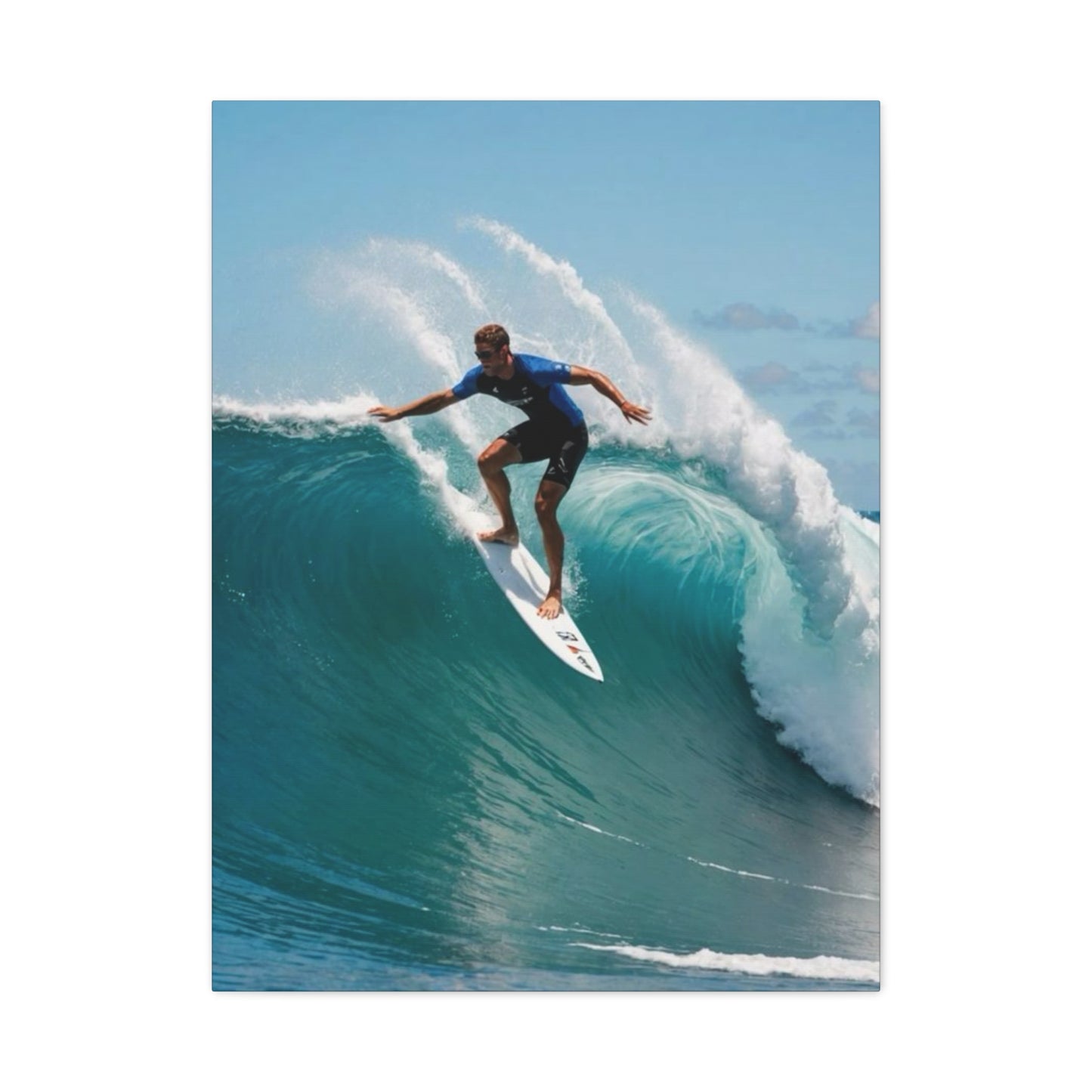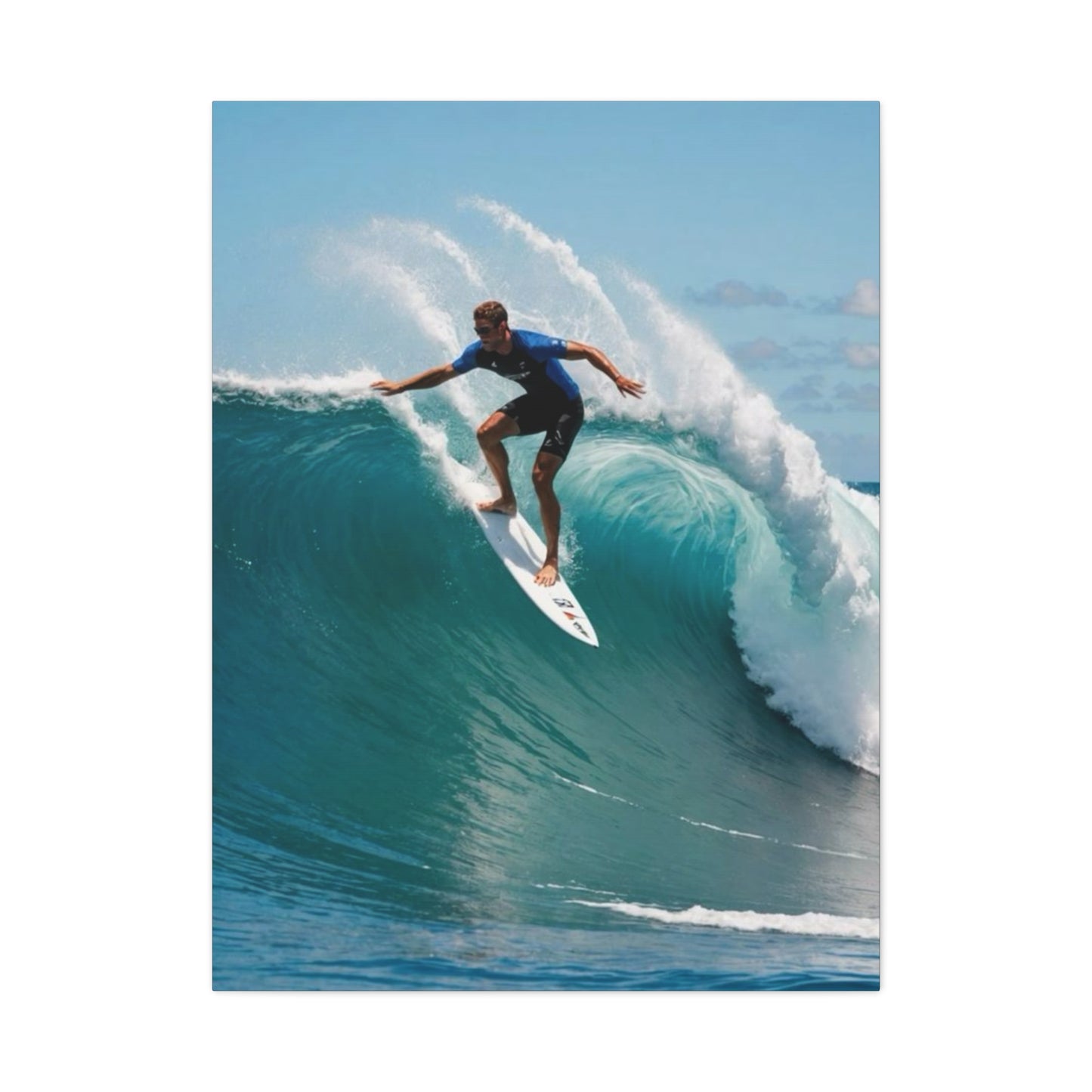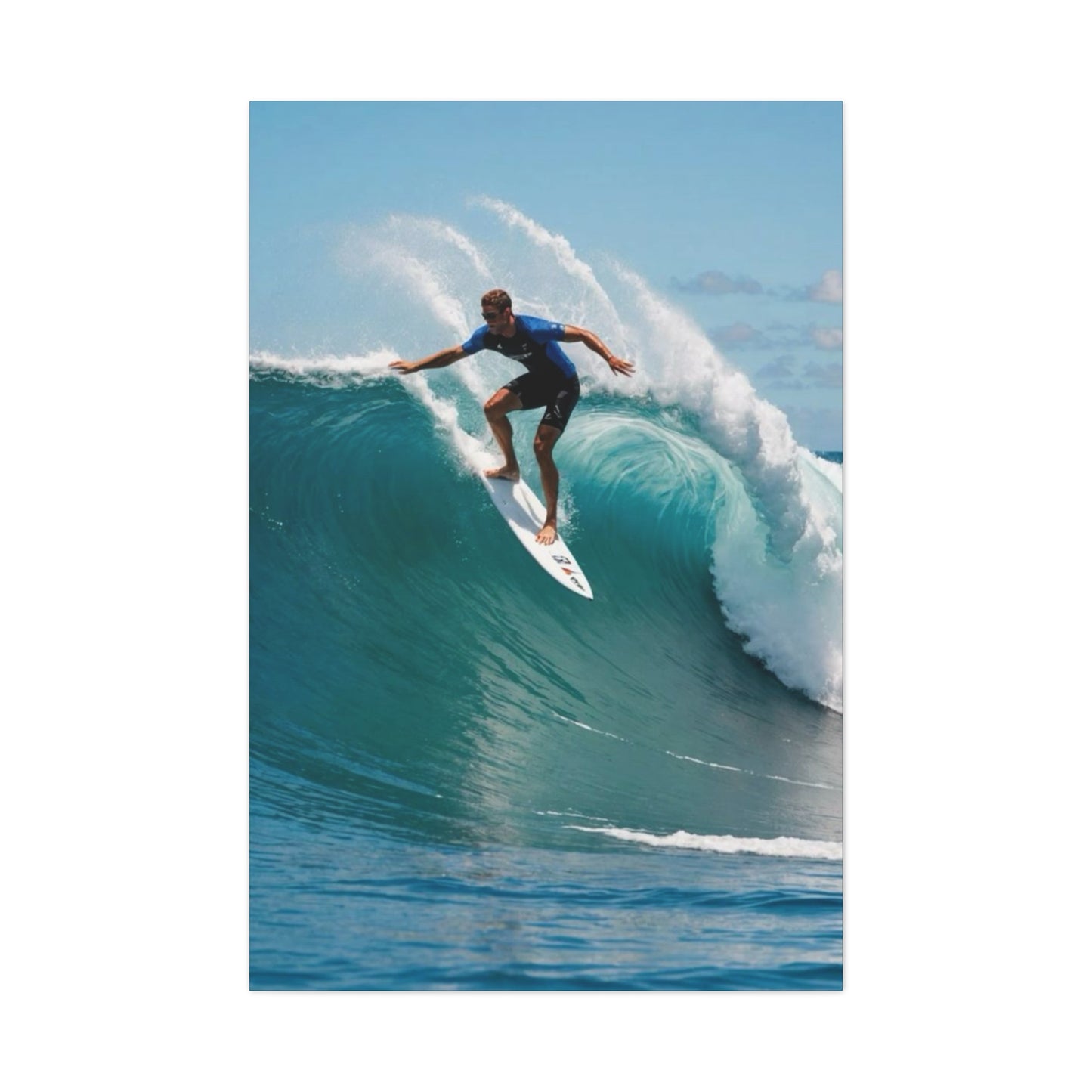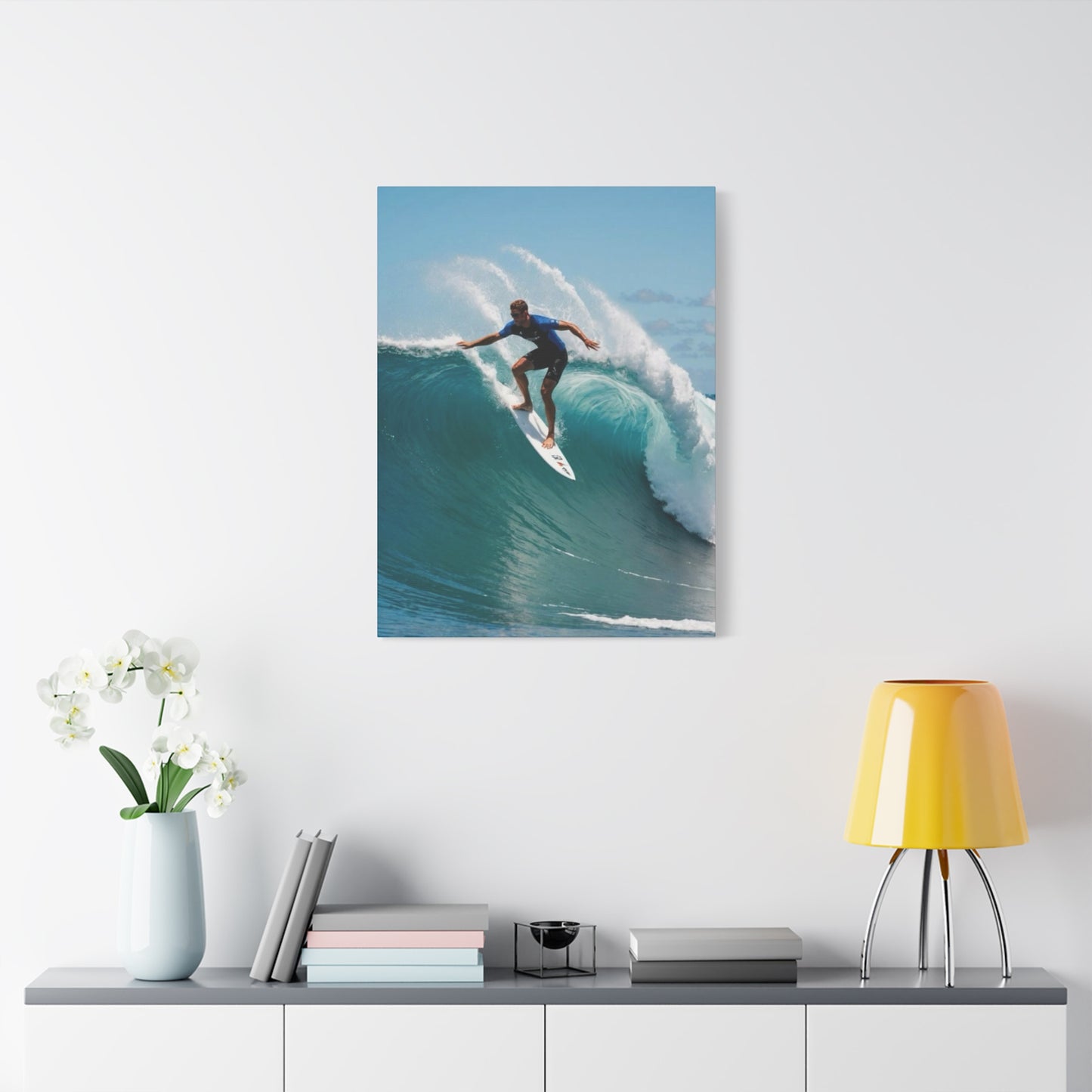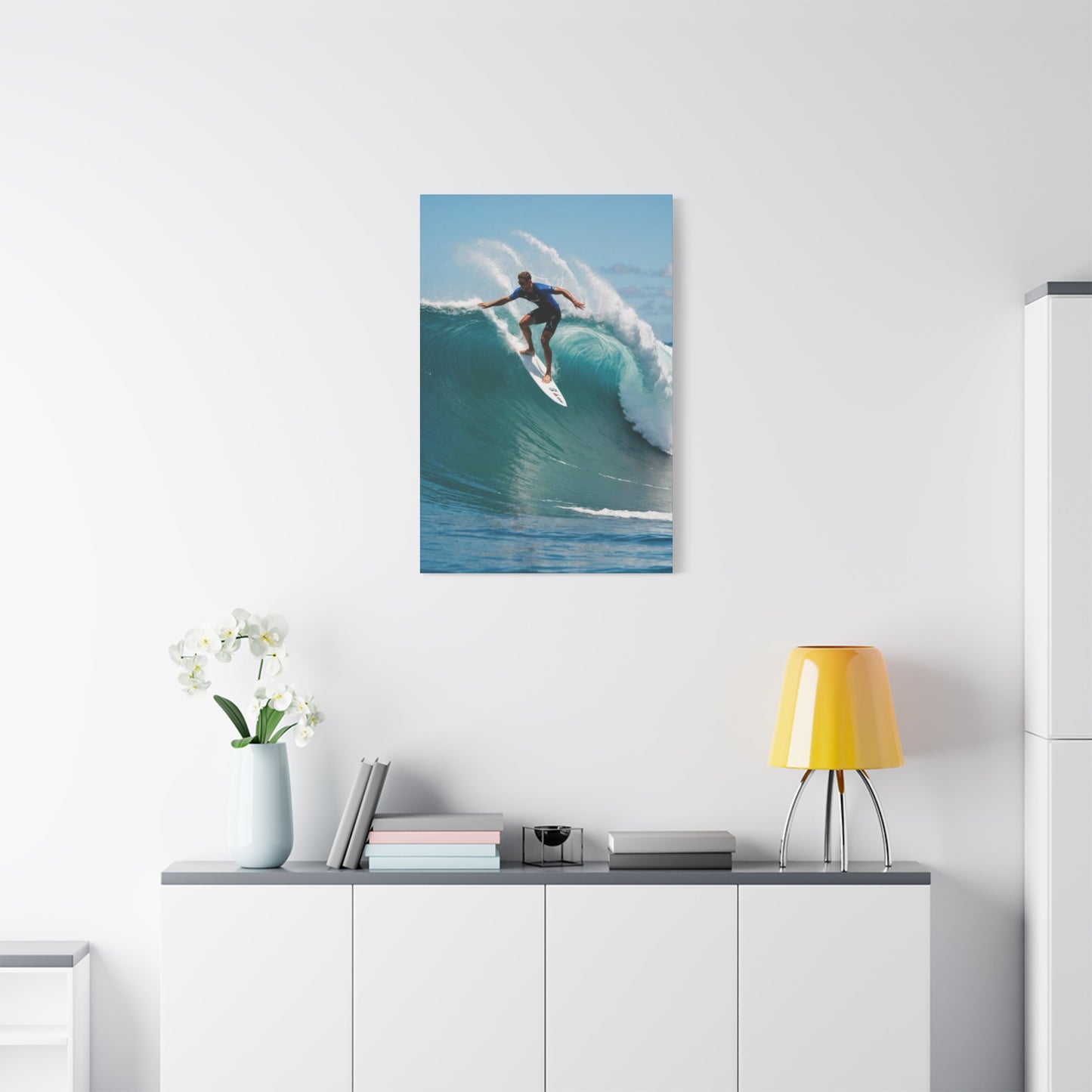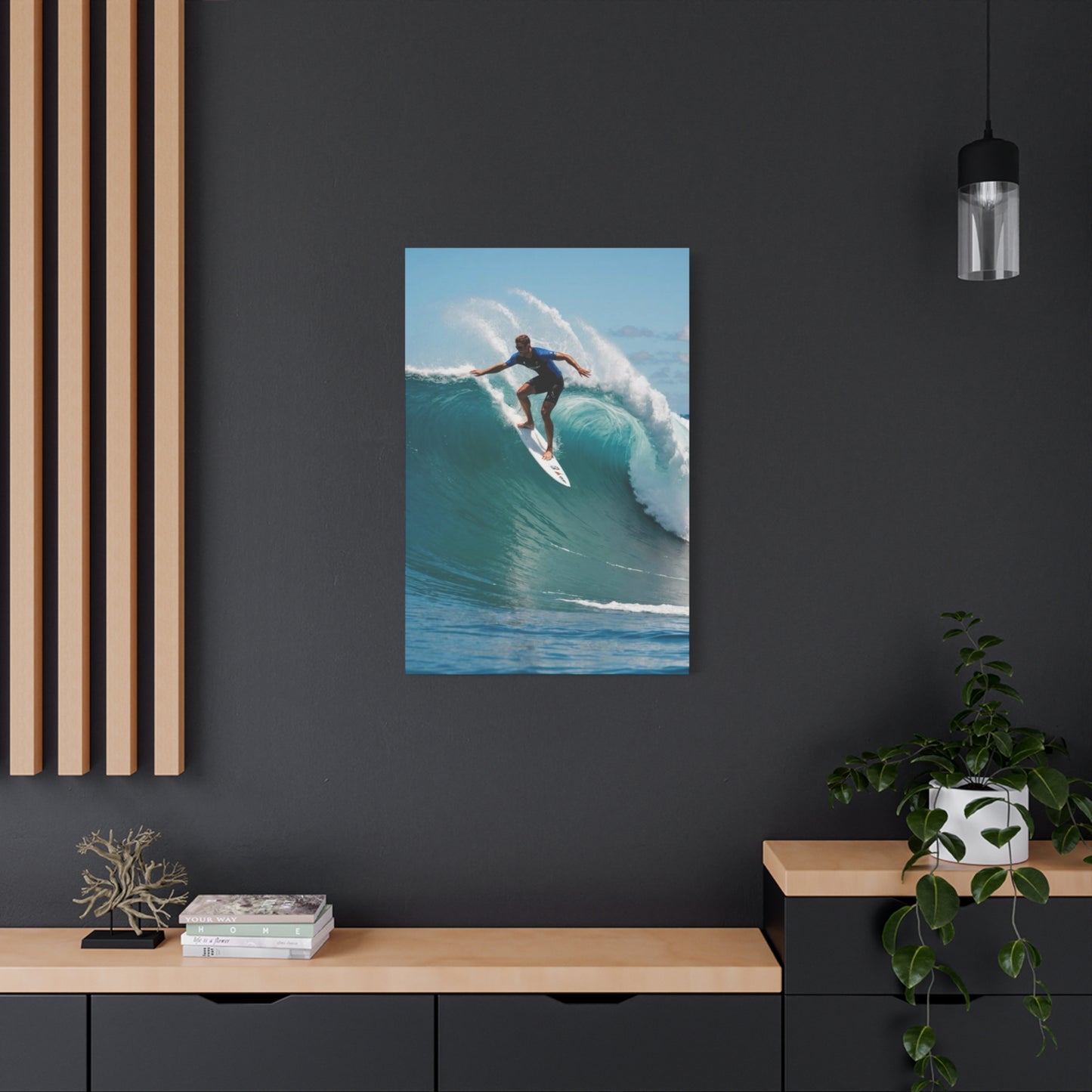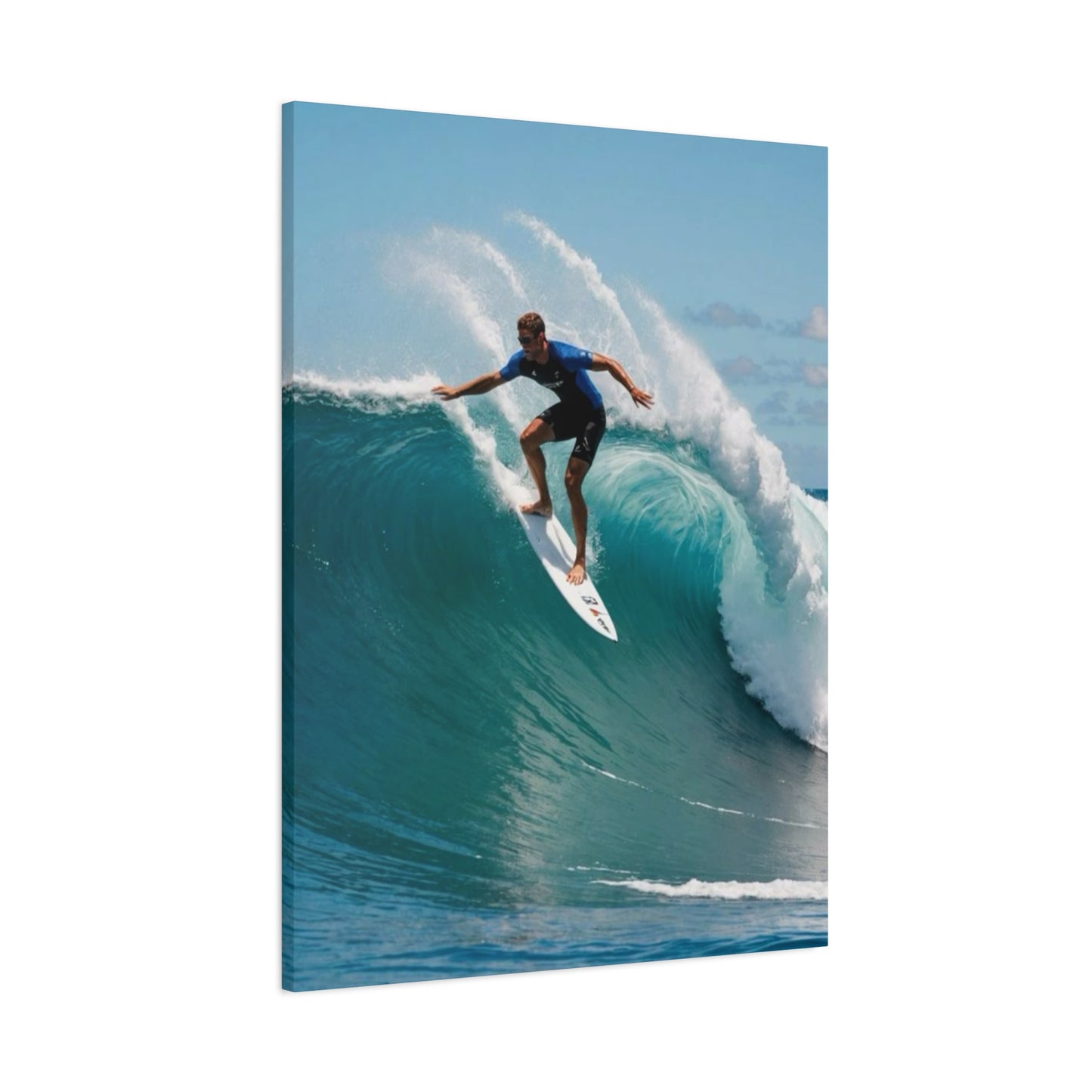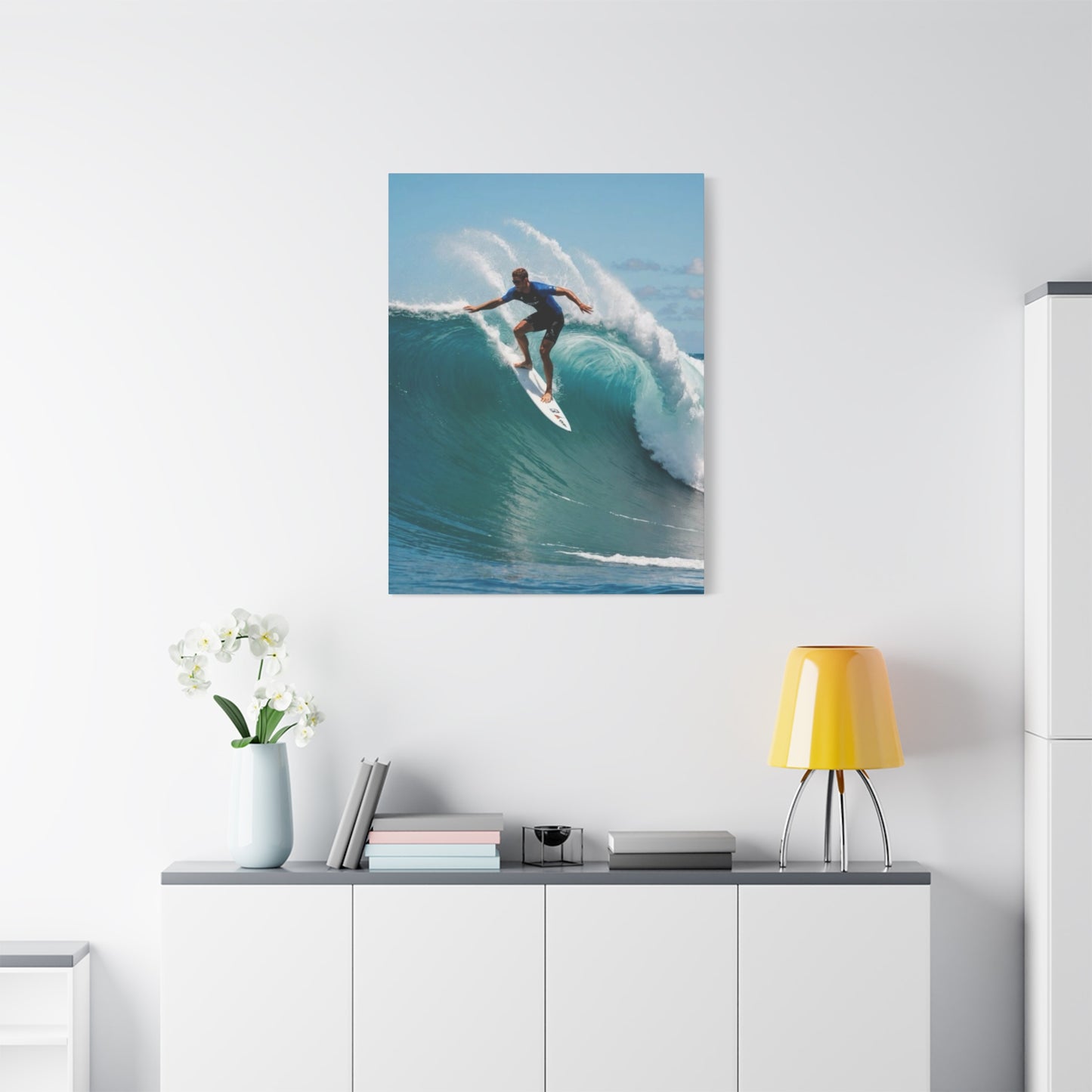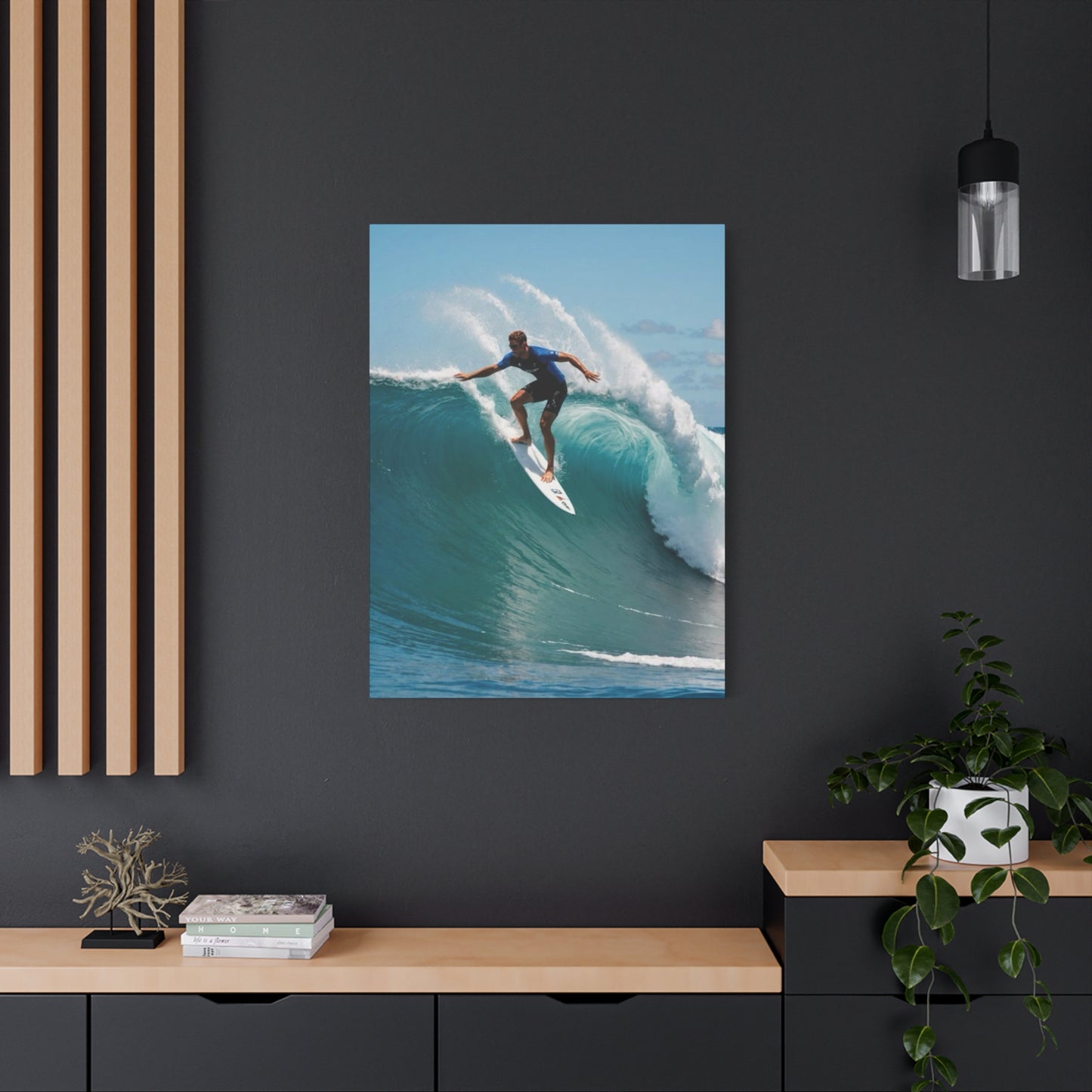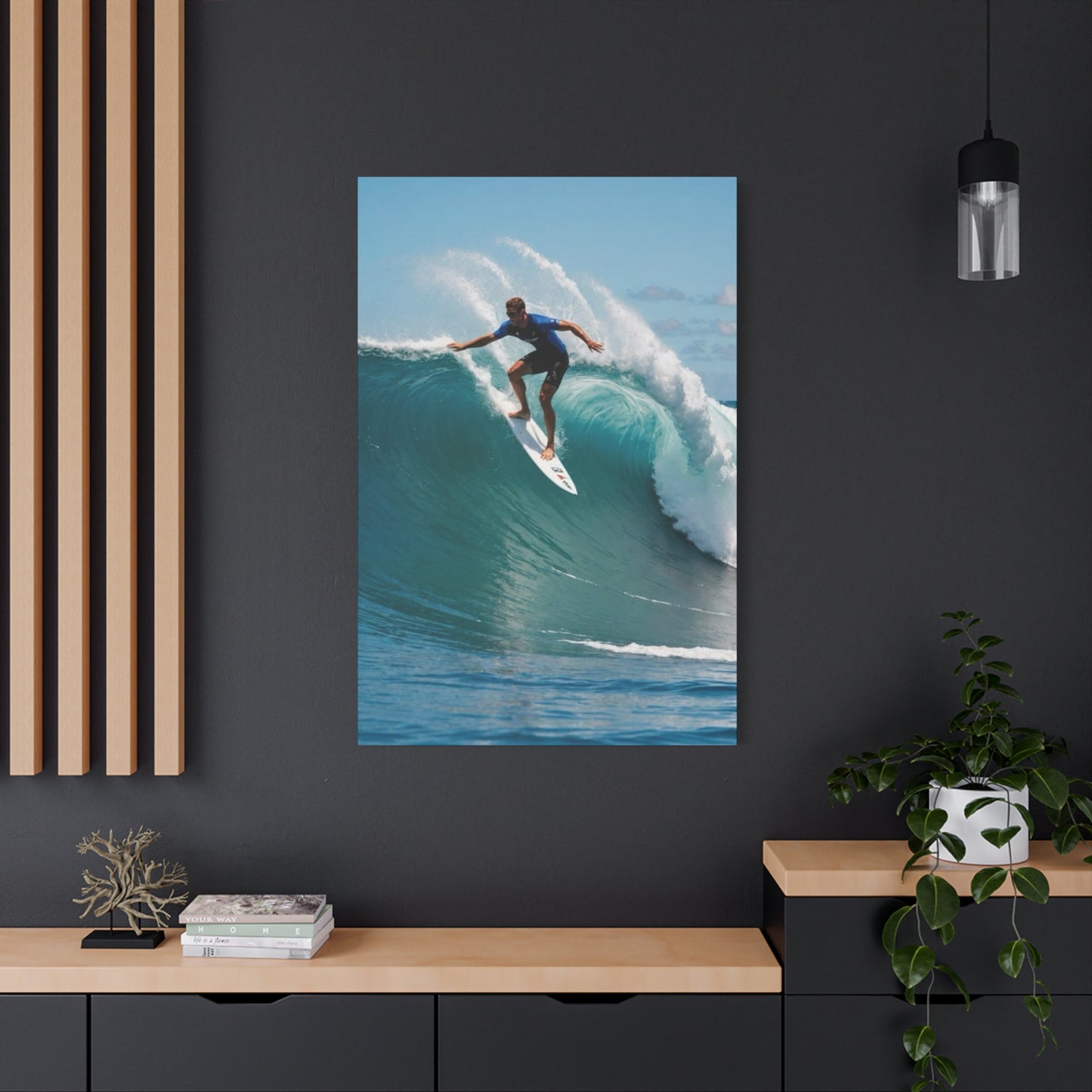The Ultimate Guide to Professional Surfer Wall Art: Bringing Ocean Energy Into Your Space
The world of professional surfing represents more than just a sport—it embodies a lifestyle, a connection with nature, and an expression of human courage against the raw power of the ocean. When you bring images of wave riders into your living space through carefully selected wall decorations, you're not just adding aesthetic appeal to your rooms. You're inviting the spirit of adventure, the beauty of coastal living, and the dynamic energy of the sea into your everyday environment. This comprehensive exploration will guide you through everything you need to know about selecting, displaying, and appreciating artwork that captures the essence of surfing culture.
Understanding the Appeal of Ocean Wave Rider Imagery
The magnetic pull of surfing imagery extends far beyond those who actively participate in the sport. There's something universally captivating about watching a human figure navigate the tremendous force of a breaking wave, balanced on a board, moving in harmony with an element that could easily overwhelm them. This visual narrative speaks to fundamental aspects of the human experience—our relationship with nature, our desire for freedom, our pursuit of mastery over challenging skills, and our appreciation for moments of pure, concentrated presence.
When you observe artwork depicting wave riders in action, your mind processes multiple layers of meaning simultaneously. The physical composition of the image draws your eye through dynamic lines created by the wave's curl, the athlete's body position, and the spray of water caught in motion. Beyond the immediate visual impact, there's an emotional resonance that connects viewers to feelings of exhilaration, peace, respect for natural forces, and admiration for human capability. These pieces serve as daily reminders of the beauty that exists in challenging ourselves, in respecting powerful natural phenomena, and in finding grace under pressure.
The cultural significance of surfing has evolved tremendously over the past century. What began as an ancient Polynesian practice has transformed into a global phenomenon that influences fashion, music, language, and lifestyle choices far from any coastline. Artwork capturing this culture carries with it layers of historical meaning, representing different eras of the sport, various geographical locations with their unique wave characteristics, and the evolution of both equipment and technique. When you select pieces for your space, you're connecting with this rich cultural heritage and making it part of your personal environment.
Capturing Motion and Energy Through Visual Media
The challenge of representing movement in a static medium has fascinated artists for centuries, and surfing provides one of the most dynamic subjects imaginable. Professional photographers and artists who specialize in this genre must master not only their technical craft but also develop an intimate understanding of ocean behavior, light conditions, and the split-second timing that separates an ordinary image from an extraordinary one. The resulting artwork captures what the human eye might miss in real-time observation—the precise moment when spray creates a halo around the athlete, when the wave face becomes a translucent window showing light filtering through water, or when the surfer's expression reveals total concentration.
The technical aspects of creating compelling wave rider imagery involve numerous considerations. Photographers often position themselves in the water, sometimes in dangerous conditions, to achieve angles that place viewers directly in the action. The use of specialized equipment allows for freezing motion at incredibly high speeds, revealing details of water droplets, board flex, and body positioning that would be impossible to observe with the naked eye. Alternative approaches might embrace motion blur to convey speed and fluidity, or use long exposures to show the path of movement over time. Each technical choice contributes to the emotional impact and narrative quality of the final piece.
Color plays a crucial role in how these images affect viewers and integrate into interior spaces. The palette of surfing naturally includes the blues and greens of ocean water, ranging from deep navy in powerful swells to brilliant turquoise in tropical shallows. Golden hour lighting adds warm oranges and pinks, creating contrast and depth. The white of foam and spray provides highlights and draws the eye to points of action. Some artists work within this natural color range, while others may apply filters, adjustments, or artistic interpretations that emphasize certain hues to match specific aesthetic preferences or interior design schemes.
Transform Your Living Space With Coastal Energy
Introducing wave rider artwork into your home environment creates an immediate shift in atmosphere. These pieces function as visual anchors that can define the mood of an entire room, serving as conversation starters and daily sources of inspiration. The key to successful integration lies in understanding how different styles, sizes, and presentation methods interact with your existing space and how they can enhance the experience of those who spend time there.
Consider the psychological impact of having ocean-themed imagery in your daily environment. Research in environmental psychology suggests that exposure to nature scenes, particularly those involving water, can reduce stress, improve mood, and enhance cognitive function. Even if you live far from any coastline, bringing these elements into your space creates a visual connection to natural environments that our minds find inherently calming and restorative. The dynamic aspect of surfing imagery adds an energizing quality that prevents the space from feeling too sedative, striking a balance between calm and vitality.
The placement of these pieces requires thoughtful consideration of room function, lighting conditions, and viewing angles. In living areas where people gather and relax, larger statement pieces can serve as focal points that draw the eye and anchor furniture arrangements. Hallways and transitional spaces benefit from series or collections that create visual flow and narrative as people move through them. Bedrooms might feature more contemplative pieces that emphasize the meditative aspects of ocean connection rather than high-action moments. Office spaces can benefit from the motivational and aspirational qualities of athletic achievement imagery, reminding occupants of dedication, practice, and the rewards of pushing personal boundaries.
Exploring Different Artistic Approaches to Wave Riding Imagery
The spectrum of artistic interpretation in surfing artwork ranges from documentary realism to abstract expressionism, with countless approaches in between. Understanding these different styles helps in selecting pieces that resonate with your personal aesthetic preferences and complement your existing interior design approach. Each style offers unique advantages and creates distinctly different effects within a space.
Photographic realism captures actual moments with technical precision, preserving the authentic details of real waves, real athletes, and real conditions. These pieces appeal to those who value documentary authenticity and want to showcase the actual beauty of the sport without artistic embellishment. The credibility of these images—knowing they represent something that actually occurred—adds to their impact. Within this category, variations exist based on compositional choices, such as tight crops that emphasize specific details versus wide shots that provide environmental context and showcase the scale of waves relative to the rider.
Artistic photography takes captured moments and applies creative processes to transform them into something beyond straight documentation. This might involve dramatic color grading that shifts the entire mood, selective focus techniques that direct attention, compositing multiple exposures to create impossible perspectives, or applying textures and effects that give photographic images a more painterly quality. These approaches allow photographers to infuse their personal vision into the work while maintaining a foundation in captured reality.
Illustration and painting open entirely different possibilities for interpretation. Artists working in traditional media or digital painting can emphasize certain elements, simplify or exaggerate forms, experiment with color relationships that don't exist in nature, and incorporate stylistic elements from various art movements. Watercolor interpretations might emphasize the fluid nature of both medium and subject. Bold graphic styles can reduce complex scenes to essential lines and shapes, creating pieces with strong visual impact suitable for modern interiors. Mixed media approaches combine photographic elements with painting, collage, or other techniques to create layered works with rich visual texture.
Choosing the Right Size and Format for Your Space
The dimensions and format of artwork significantly influence its impact and how successfully it integrates into your environment. This decision involves practical considerations like wall space and viewing distance, as well as aesthetic choices about the statement you want to make and the balance you want to achieve within the room.
Large-scale pieces make bold statements and work best in spaces with substantial wall area and sufficient viewing distance. A massive image of a wave and rider can create an immersive experience, making viewers feel almost present in the scene. These pieces work particularly well in open-plan living areas, above substantial furniture pieces like sofas or beds, or in spaces with high ceilings where scale needs to be addressed. The investment in a large piece often proves worthwhile as it can single-handedly define the character of a space and eliminate the need for multiple smaller decorative elements.
Medium-sized pieces offer versatility and can work in various contexts. They provide substantial visual interest without overwhelming spaces, make it easier to create balanced groupings with other elements, and generally prove easier to relocate if you rearrange or move. These pieces work well in dining areas, bedrooms, home offices, and as part of gallery wall arrangements where multiple pieces of varying sizes create a cohesive display.
Smaller pieces and collections allow for creative arrangements and the building of themed galleries over time. Rather than making a single large investment, you can gradually accumulate pieces that capture different aspects of surf culture, various locations, or multiple moments in the progression of a ride. This approach provides flexibility, allows for personal curation that tells a more complex story, and can be adjusted as your tastes evolve. Small pieces also work well in spaces where wall area is limited, such as bathrooms, entryways, or smaller bedrooms.
The orientation of pieces—whether horizontal, vertical, or square—affects composition and placement options. Horizontal formats naturally complement the way waves move and how our eyes track motion across space, making them intuitive choices for surfing imagery. They work well above sofas, beds, and consoles. Vertical formats can emphasize the height of waves or the full body extension of athletes in certain maneuvers, and they excel in narrow wall spaces or flanking doorways and windows. Square formats offer balanced composition and work well in modern interiors with clean lines and geometric emphasis.
Material Choices and Presentation Methods
How artwork is produced and presented affects both its visual impact and its longevity. Understanding the various options helps you make informed decisions that balance aesthetic preferences, budget considerations, and practical requirements for your specific environment.
Canvas prints have become increasingly popular for their combination of artistic credibility, durability, and relatively accessible pricing. The texture of canvas adds dimension to images and eliminates glare issues that can affect flat prints behind glass. Gallery-wrapped canvases, where the image extends around the edges of the frame, create a finished appearance that doesn't require additional framing. This presentation method suits contemporary interiors and creates a clean, uncluttered look. Canvas also has the advantage of being lightweight, which simplifies hanging and reduces stress on walls.
Metal prints represent a modern presentation method that enhances color vibrancy and creates a luminous quality as light reflects off the metal surface. The durability of metal makes these prints suitable for humid environments like bathrooms or coastal homes where traditional paper might suffer. The sleek, frameless appearance of metal prints complements contemporary and industrial interior styles. The reflective quality can be striking but requires consideration of lighting to avoid unwanted glare in viewing positions.
Acrylic prints create depth and dimensionality by mounting images behind clear acrylic panels. This presentation method produces exceptionally vibrant colors and gives images an almost three-dimensional quality. The glossy surface and frameless edges create a modern, gallery-quality appearance that works beautifully in upscale contemporary interiors. The substantial weight of acrylic pieces should be factored into hanging considerations, and the reflective surface requires thoughtful lighting placement.
Traditional framed prints offer timeless appeal and maximum flexibility in terms of customization. The choice of frame style, matting color and width, and glass or acrylic glazing allows for tailoring the presentation to match your interior exactly. Conservation-quality materials ensure longevity, protecting the print from fading, moisture, and physical damage. Framing does add cost and weight compared to other methods, but it provides the highest level of presentation quality and allows for easy print replacement if desired.
Color Palettes and Interior Design Integration
Successfully incorporating ocean and wave rider imagery into your existing interior design requires consideration of color relationships, style compatibility, and the overall mood you want to create. While these pieces have inherent color characteristics based on their subject matter, there's considerable variation that allows for matching virtually any design scheme.
Spaces decorated in coastal or beach themes provide the most natural context for surfing artwork, as the subject matter directly reinforces the design concept. However, avoid creating a space that feels like a surf shop or beach resort unless that's specifically your goal. The sophistication comes from thoughtful curation and restraint, allowing the artwork to serve as a refined nod to surf culture rather than an overwhelming theme. Pair these pieces with natural materials like weathered wood, rope, and linen. Use a palette that includes sandy neutrals, soft grays, and blues in various saturations. Add texture through woven elements, organic shapes, and materials that reference the natural world.
Modern and contemporary interiors can accommodate surfing imagery beautifully, particularly pieces with strong graphic qualities, high contrast, or artistic interpretation rather than straight documentary photography. In minimalist spaces with neutral color palettes, a vibrant surf image provides a necessary pop of color and serves as the room's focal point. Alternatively, black and white or monochromatic surf images can reinforce the restrained sophistication of modern design while adding visual interest through composition and subject matter. Clean-lined furniture, uncluttered surfaces, and thoughtful lighting allow the artwork to command attention without competing with other decorative elements.
Traditional interiors present more of a challenge for surfing artwork but not an insurmountable one. The key lies in presentation method and piece selection. A beautifully framed piece with substantial matting and a traditional wood frame can bridge the gap between contemporary subject matter and classic interior styling. Choosing images with more muted colors, perhaps with vintage processing or historical subject matter, helps these pieces feel less jarring in traditional contexts. Placement in less formal areas like home offices, recreation rooms, or casual lounges works better than trying to force the aesthetic into formal living or dining rooms.
Industrial interiors with exposed brick, metal elements, and urban aesthetics can incorporate surf imagery in unexpected ways. The contrast between gritty urban materials and pristine natural ocean scenes creates visual interest. Metal or acrylic prints work particularly well in these spaces, as their modern presentation methods complement the industrial aesthetic. Oversized pieces make bold statements against brick or concrete walls, while collections of smaller pieces can occupy metal shelving or pipe-mounted display systems.
The Cultural Significance Behind Wave Riding Art
Understanding the cultural context of surfing enriches your appreciation of artwork depicting it and informs more meaningful selection and display decisions. This sport carries deep historical roots, represents specific values and philosophies, and continues to evolve as a cultural force with global influence.
The origins of wave riding in ancient Polynesian culture elevated it far beyond mere recreation. Hawaiian society in particular integrated surfing into social structure, spiritual practice, and demonstrations of skill and status. Chiefs displayed their authority through prowess on waves, and certain breaks were reserved for royalty. This cultural significance nearly disappeared during the colonial period when missionaries suppressed many traditional practices. The revival and modernization of surfing in the early twentieth century, particularly through figures like Duke Kahanamoku, brought the practice to international attention and began its evolution into the global phenomenon we know today.
The development of surf culture in California and Australia during the mid-twentieth century created new cultural associations around surfing. It became linked with youth rebellion, freedom from conventional expectations, and a hedonistic pursuit of perfect waves regardless of career demands or social responsibilities. This romanticized vision influenced music, particularly the birth of surf rock, fashion trends that emphasized casual beachwear, and language with its own slang and expressions. Films and literature explored the surfing lifestyle, sometimes critically examining the tension between pure pursuit of waves and practical life demands.
Contemporary surf culture has matured and diversified while maintaining certain core values. Environmental consciousness runs strong in surfing communities, as participants directly experience ocean health and climate impacts. This has led to activism around ocean conservation, plastic reduction, and climate change. The competitive aspect has professionalized with a world tour, Olympic inclusion, and significant corporate sponsorships, while the soul surfing tradition continues to emphasize personal experience over competitive achievement. Women's surfing has gained increased visibility and respect, challenging the sport's historically male-dominated culture.
Geographic diversity in surf culture means that artwork depicting different locations carries distinct associations. Hawaiian imagery connects to the sport's roots and the world's most renowned waves. California surfing evokes the sun-soaked lifestyle and the birth of modern surf culture. Australian surf imagery reflects that nation's deep integration of beach culture into national identity. Cold water surfing in places like Iceland, Scotland, or the Pacific Northwest showcases dedication and the expansion of the sport into unlikely locations. Understanding these geographic associations adds depth to how you select and present pieces in your space.
Seasonal Considerations and Changing Displays
While permanent installations of wave rider artwork create consistent atmosphere, considering seasonal rotations or variations can keep your space feeling fresh and allow you to explore different aspects of surf culture and ocean aesthetics throughout the year.
Summer naturally calls for brighter, more energetic pieces that capture the warmth and vitality of peak season surfing. Images with brilliant sunshine, turquoise waters, and vibrant colors reinforce the season's energy. These pieces remind viewers of beach vacations, outdoor adventures, and the freedom associated with warmer months. Displaying collections that emphasize tropical locations, reef breaks, and sunlit sessions creates visual associations with summer even on days when weather doesn't cooperate.
Autumn brings different ocean moods worth celebrating through your artwork selections. Early season swells often produce excellent surf conditions, and the changing light quality creates different visual character in ocean scenes. Images capturing golden hour sessions with warm backlighting, or the deeper blue-gray tones of autumn seas, connect with the seasonal transition. This might be the time to display pieces with more muted palettes, emphasizing the meditative aspects of surfing rather than pure energy and action.
Winter surf imagery has its own dramatic character, particularly in locations where surfing continues despite challenging conditions. Images of steely gray seas, storm-generated swells, and brave souls tackling frigid waters showcase dedication and the raw power of winter oceans. These pieces work well during colder months, acknowledging the season while maintaining connection to the water. Cold water surf imagery can be particularly inspiring during winter months when outdoor activities become more challenging, serving as reminders of human capability and resilience.
Spring represents renewal and the anticipation of returning to regular ocean time for many enthusiasts. Lighter, hopeful pieces that capture the optimism of improving conditions and lengthening days match the seasonal mood. Images depicting less crowded sessions, emerging sunshine after winter storms, or the awakening of coastal environments align with spring's regenerative energy.
Creating Gallery Walls and Collections
Rather than relying on a single large piece, building a curated collection of smaller works allows for more complex storytelling, personal expression, and the satisfaction of gradual accumulation. Successfully executing a gallery wall requires planning, but the results create highly personalized and visually interesting displays.
Thematic coherence gives gallery walls purpose and prevents them from appearing as random assemblages. You might organize around a specific geographic location, tracking your surf experiences at a particular break or region. Alternatively, create a progression that shows different stages of a wave ride from paddling out to completion. Explore variations in light and time of day, with pieces showing dawn patrol sessions, midday glare, and evening glass-off conditions. Focus on specific technical maneuvers or surfing styles, creating an educational display that showcases the sport's diversity.
Visual consistency helps collections feel cohesive even when pieces differ in specific content. This might come through matching frames, consistent matting approaches, or selecting pieces with similar color processing. Black and white collections eliminate color variation as a variable, forcing unity through tonal relationships and composition. Alternatively, embrace variation while maintaining consistency in scale, with all pieces roughly similar in dimensions even if orientations differ.
Layout planning prevents the frustration of multiple nail holes from trial and error arrangements. Create templates by tracing your pieces on paper and experimenting with arrangements on the floor before committing to wall placement. Consider the negative space between pieces as carefully as the pieces themselves, maintaining consistent spacing that allows each work to breathe while reading as a unified installation. Balance the visual weight across the arrangement, ensuring that darker or more visually complex pieces don't cluster on one side creating an unbalanced appearance.
Flexibility in gallery wall systems allows for evolution and experimentation without permanent wall damage. Picture rail systems or ledges designed for leaning artwork enable easy rearrangement and rotation. This approach works particularly well for renters or those who enjoy frequently refreshing their spaces. The slightly less permanent appearance of leaning pieces also contributes to a more casual, collected-over-time aesthetic rather than a formal, gallery-like precision.
Commissioning Custom Pieces and Working With Artists
For those seeking truly unique artwork perfectly matched to their space and vision, commissioning custom pieces provides the ultimate in personalization. This process requires clear communication, reasonable expectations, and understanding of artistic process and timelines.
Finding the right artist involves research into different creators' styles, techniques, and specializations. Some photographers focus on aerial perspectives captured by drones, while others specialize in water photography from within the surf zone. Painters might work in specific styles ranging from photorealistic to abstract. Review portfolios carefully, paying attention not just to whether you like individual pieces but whether the artist's overall body of work demonstrates consistency and quality. Look for artists who specialize in surf and ocean subjects rather than generalists, as their understanding of the subject matter will produce more authentic results.
Initial conversations should cover your vision, the intended location and dimensions, color preferences based on your existing interior, the mood or energy you want the piece to convey, and your budget. Provide reference images of pieces you admire, even if they're not by this artist, to communicate aesthetic preferences. Discuss the timeline, including production time and shipping considerations. Understand the artist's process—will you see preliminary sketches or mockups, will you have opportunities for input and revision, what happens if you're unsatisfied with the final result?
Budget considerations for custom work need to account for multiple factors beyond just the purchase price. Original paintings or premium photographic prints command higher prices than reproductions, reflecting the time, skill, materials, and uniqueness involved. Larger pieces require more materials and time, affecting pricing. The artist's reputation and experience level influence rates, with established artists commanding premium prices while emerging talents may offer more accessible entry points. Framing and shipping add to overall costs, particularly for large or delicate pieces requiring special handling.
The relationship between artist and client works best when based on mutual respect and clear boundaries. Trust the artist's expertise and creative vision while clearly communicating your needs and preferences. Provide honest feedback during review stages but understand that excessive revision requests or fundamental changes in direction may incur additional costs. If the artist suggests approaches different from your initial concept, remain open to their professional judgment while ensuring your core objectives are met. Document agreements in writing to prevent misunderstandings about deliverables, timeline, and payment terms.
Photography Techniques That Capture Perfect Wave Moments
Understanding how these images are created deepens appreciation for the artwork and reveals the skill, dedication, and sometimes danger involved in capturing perfect moments of wave riding. The technical and physical challenges make each successful image an achievement beyond just aesthetic appeal.
Water photography positions the photographer directly in the ocean, often in the impact zone where waves break. This proximity creates dramatic perspectives impossible to achieve from shore or boats. Photographers use specialized waterproof housings to protect equipment while swimming in powerful surf, requiring physical fitness and ocean knowledge to maintain position and safety. The eye-level or below perspective places viewers essentially in the lineup alongside the riders, creating intimate, immersive images. The tradeoff for this dramatic perspective is the danger, the physical demand, and the challenge of maintaining position and focus while being moved by currents and waves.
Aerial photography from helicopters, planes, or drones provides entirely different perspectives that reveal patterns invisible at sea level. From above, viewers see how waves organize themselves into sets, how sandbars and reefs shape wave formation, and how surfers position themselves to intercept these moving targets. The scale becomes apparent, showing riders as small figures against massive faces of water. Drones have democratized aerial photography, making these perspectives more accessible to photographers without helicopter budgets. However, capturing compelling images still requires skill in composition, timing, and operating equipment in challenging conditions including wind and salt spray.
Long lens photography from shore or boats allows photographers to stay safe while capturing detailed images of distant action. Modern telephoto lenses with stabilization systems produce sharp images despite significant distances and photographer movement on unstable platforms. This approach works particularly well at well-known breaks where photographers can predict where action will occur and position accordingly. The compressed perspective created by long lenses makes waves appear steeper and more dramatic, though it sacrifices the sense of being in the environment that closer perspectives provide.
High-speed photography freezes moments invisible to the naked eye, revealing the intricate details of water behavior, equipment performance, and body positioning. Fast shutter speeds stop droplets in midair, show the flex of boards under pressure, and capture facial expressions during critical moments. This approach emphasizes the athletic and technical aspects of surfing, showcasing the physical demands and the precision required. Some photographers push this further with ultra-high-speed equipment used in scientific and industrial applications, producing images where time itself seems suspended.
Supporting Artists and the Surf Photography Community
Purchasing wave rider artwork often means supporting independent artists and photographers who dedicate themselves to capturing these moments. Understanding this ecosystem and making conscious purchasing decisions helps sustain the community that creates the imagery we value.
Independent artists and photographers typically operate without institutional support, funding their work through direct sales, commission projects, and sometimes commercial licensing. Your purchase directly supports their ability to continue creating, covering costs of equipment, travel to quality surf locations, time spent in the water, and the overhead of running a creative business. Many surf photographers spend countless hours in challenging conditions to capture a few perfect images, making each successful piece represent significant investment beyond what's visible in the final work.
Direct purchases from artists rather than through resellers ensures that more of your money reaches the creator. While galleries and retailers provide valuable services including curation, promotion, and convenient shopping experiences, their margins reduce what artists receive. Many photographers and artists sell directly through their websites or social media platforms, allowing you to purchase while supporting them more substantially. This direct relationship also may provide opportunities for custom work, commissions, or simply the satisfaction of connecting with the person whose vision created the work you're bringing into your home.
Limited edition prints offer a middle ground between unique original works and unlimited reproductions. By limiting the number of prints made from a particular image, artists create scarcity that preserves value while making their work more accessible than one-of-a-kind pieces. Edition sizes vary, with smaller editions generally commanding higher prices but offering more exclusivity. Signed and numbered prints document authenticity and your specific position in the edition. Understanding edition details helps you make informed decisions about the investment aspect of your purchase if future value concerns you.
Licensing and copyright considerations matter when purchasing artwork. You're purchasing the physical object and the right to display it, not the copyright to the image itself. This means you cannot reproduce the image, use it in commercial applications, or create derivative works without permission. Respecting these boundaries protects artists' ability to control their work and earn living from it. If you wish to use an image beyond personal display, contact the artist about licensing arrangements.
Wave Rider Imagery in Different Room Contexts
The specific room where you display ocean and surfing artwork influences what pieces work best and how they affect the space's function and feel. Considering the purpose and mood of different areas helps optimize your selections.
Living rooms and great rooms serve as gathering spaces where people relax, entertain, and spend substantial time. These areas benefit from statement pieces that generate interest and conversation while complementing the overall design scheme. Larger works or carefully arranged collections create focal points that anchor seating arrangements. The artwork contributes to the room's character and sends messages to guests about your interests and aesthetic sensibilities. Balance the energy level of the imagery with the room's function—highly dynamic action shots energize the space, while more contemplative ocean scenes promote relaxation.
Bedrooms require more careful consideration since the artwork influences your environment during personal, private time and affects the space's restfulness. Many people prefer more serene, calming ocean imagery in bedrooms rather than high-action shots, though personal preference should guide this decision. Sunrise or sunset sessions often work well, with their softer light and contemplative mood supporting bedroom atmosphere. The color palette becomes particularly important, ensuring that the piece promotes the restful environment most bedrooms require. Position artwork where you can see it from bed, allowing it to be among the first things you see upon waking.
Home offices and workspaces benefit from inspirational, motivating imagery that energizes without distracting. Wave rider artwork in offices reminds you of worlds beyond work, providing mental breaks when you glance up from tasks. The aspirational aspects of surfing—dedication, skill development, challenge, achievement—offer subtle motivation during difficult work periods. Consider whether you want pieces that promote focused intensity or ones that provide calming contrast to work stress. The size should be sufficient to have presence without dominating the space and pulling attention from work tasks.
Bathrooms naturally accommodate ocean themes, though practical considerations around humidity and space limitations apply. Smaller pieces or collections work well given typical bathroom dimensions. Metal or acrylic prints resist moisture better than canvas or paper. The daily ritual nature of bathroom use means you'll see these pieces frequently, making them opportunities for artwork you truly love rather than secondary pieces relegated to less important spaces. Ensure proper ventilation to protect artwork from humidity damage.
Hallways and transitional spaces offer opportunities for collections and series that create visual narrative as people move through them. Without needing to match specific furniture or serve a single clear function, these spaces allow for more experimental or varied approaches. A progression of images showing different aspects of a wave ride, various locations, or temporal changes throughout a day creates engaging visual storytelling. Proper lighting becomes essential in hallways, which often lack natural light, requiring intentional illumination to make artwork visible and impactful.
The Role of Black and White in Surf Photography
While color photography dominates contemporary surf imagery, black and white work maintains strong appeal and offers distinct advantages for certain aesthetic goals and interior design applications. Understanding the artistic choices and effects of monochromatic surf photography helps in deciding when this approach best serves your space.
Removing color shifts emphasis to other visual elements including form, texture, light, and composition. The curves and shapes of waves become more prominent when not competing with blue-green water and azure skies. The patterns created by water's interaction with light—reflections, refractions, translucency, and shadows—gain emphasis. The human form in motion stands out more clearly against the environment, making body positioning and athletic movement more apparent. These shifts create images that feel more timeless and focus attention on fundamental compositional strengths rather than the immediate impact of color.
Tonal range and contrast take center stage in black and white work, with the photographer or artist controlling how different colors translate to grayscale values. Sky, water, foam, and subject can be rendered with varying relationships to create specific effects. High contrast work with deep blacks and bright whites creates dramatic, bold images with strong visual impact suitable for modern interiors with clean lines and limited color palettes. Low contrast, subtle tonal work produces quieter, more contemplative images that work well in spaces where understated elegance prevails.
Timeless quality emerges from black and white imagery, which doesn't carry the temporal markers that color palettes sometimes provide. Without the specific color characteristics of different eras—the particular film stocks popular in certain decades or the digital processing trends of recent years—black and white images feel less tied to specific periods. This makes them suitable for traditional interiors where contemporary color surf photography might feel anachronistic, and ensures that the work won't feel dated as color trends evolve over time.
Grain structure and texture in black and white film photography create visual richness that differs from the smooth precision of digital capture. Many photographers working in black and white specifically choose film for these characteristics, accepting the technical limitations in exchange for aesthetic qualities that digital processes struggle to replicate authentically. The grain becomes part of the image's texture, adding dimension and a tangible quality that connects to photography's material history. When displayed as large prints, this grain structure creates visual interest up close while reading as smooth tonal gradations from viewing distance.
Emotional impact of black and white imagery often leans toward the dramatic, contemplative, or nostalgic compared to color work's immediate sensory appeal. The abstraction of removing color asks viewers to engage differently, filling in what's missing from their knowledge and imagination. This active participation in completing the image can create deeper connection than passive reception of complete sensory information. The resulting pieces work well in spaces designed for reflection, conversation, or contemplation rather than high-energy entertainment.
Incorporating Surf Art into Business and Commercial Spaces
Beyond residential applications, wave rider imagery serves powerful functions in various commercial contexts, contributing to brand identity, customer experience, and workplace environment. Understanding these applications reveals the versatility and impact of well-selected ocean and surf-related artwork.
Surf shops and action sports retailers naturally incorporate surf imagery to reinforce brand identity and create authentic environments that resonate with customers. Rather than appearing as pure decoration, these pieces function as cultural signifiers that communicate credibility and connection to the surf community. Mixture of historical and contemporary images, local breaks alongside international destinations, and both famous athletes and unknown rippers creates visual storytelling that celebrates the sport's breadth and depth. Rotating displays keep the environment fresh for regular customers while maintaining core elements that establish identity.
Hospitality businesses including hotels, resorts, and vacation rentals use surf imagery to establish location identity and set mood. Coastal properties naturally align with beach and ocean themes, with surf art contributing to the sense of place that guests seek in destination accommodations. The imagery promises guests the lifestyle and experiences available in the area, functioning as both decoration and subtle marketing. Quality matters particularly in upscale properties where generic or low-quality beach décor undermines the premium positioning. Investing in original or limited edition works from recognized artists elevates the space and creates memorable impressions that influence guest satisfaction and online reviews.
Restaurants and bars, particularly those with coastal locations or beach-casual concepts, use surf imagery to support their atmosphere and theme. These pieces contribute to the total sensory experience alongside food, drink, music, and service, helping transport guests to the relaxed mindset associated with beach culture. Durability becomes particularly important in food service environments where humidity, temperature changes, and potential splashing threaten artwork. Appropriate materials and protective measures ensure longevity despite challenging conditions. The investment in quality artwork pays dividends in creating distinctive atmosphere that differentiates the establishment from competitors.
Corporate offices and coworking spaces increasingly incorporate diverse artwork including surf imagery to create engaging environments that support creativity and wellbeing. The biophilic benefits of ocean imagery contribute to stress reduction and satisfaction for workers spending long hours indoors. The associations with freedom, adventure, and work-life balance counter the negative stereotypes of corporate environments. Tech companies and creative industries particularly embrace surf culture aesthetics as part of casual, employee-focused workplace design that signals company values and culture. These installations often receive significant investment as organizations recognize that environment directly impacts productivity, recruitment, and retention.
Healthcare facilities have begun incorporating nature imagery including ocean scenes based on research showing positive effects on patient stress, pain perception, and recovery outcomes. The calming aspects of ocean imagery prove particularly valuable in waiting areas and treatment spaces where anxiety runs high. Careful selection avoids potentially frightening images of massive waves or dangerous conditions in favor of serene scenes that promote relaxation and peace. The durability and cleanability of materials becomes critical in healthcare settings with strict sanitation requirements and frequent cleaning protocols.
Fitness facilities and yoga studios often embrace surf imagery to motivate clients and reinforce the connection between physical fitness and active lifestyle pursuits. The athletic demands visible in wave riding action shots inspire gym members to push harder in their own training. The balance, flexibility, and core strength required for surfing aligns well with yoga practice, making surf imagery natural in studios emphasizing these qualities. The beach and ocean associations contribute to the aspirational lifestyle branding that fitness businesses cultivate, positioning their services as pathways to the active, healthy lives that clients desire.
Lighting Design to Enhance Wave Rider Artwork
Proper illumination dramatically affects how artwork appears and how successfully it integrates into your space. Strategic lighting design transforms good pieces into stunning focal points while protecting valuable work from damage.
Natural light provides the most pleasant and color-accurate illumination but requires management to prevent damage while maximizing positive effects. North-facing windows in the Northern Hemisphere provide consistent, indirect natural light throughout the day without direct sun exposure, making them ideal for valuable artwork. South-facing walls receive direct sun that risks fading but can be managed with UV-filtering window treatments or film. East and west exposures bring direct sun during morning and evening respectively, requiring either protective measures or acceptance that pieces in these locations should be prints or works where some fading is acceptable rather than valuable originals.
Artificial lighting options range from simple picture lights mounted directly on frames to sophisticated gallery-style track systems that provide precise control over illumination. LED technology has revolutionized art lighting by providing energy efficiency, minimal heat generation, excellent color rendering, and extremely long service life. Adjustable fixtures allow you to fine-tune beam angle, intensity, and direction to achieve desired effects. Multiple fixture types might be combined, using general ambient lighting supplemented by dedicated accent lighting for key pieces.
Color temperature affects how artwork appears and how it interacts with surrounding elements. Warm light around 2700-3000 Kelvin creates cozy, intimate atmosphere and emphasizes warm tones in imagery while potentially making blues appear less vibrant. Cool light around 4000-5000 Kelvin provides more energetic atmosphere and renders blues and greens accurately, though it can make spaces feel clinical if overused. Neutral white around 3500 Kelvin provides balance suitable for most applications. Consider matching the color temperature of artificial lighting to the natural light conditions shown in the artwork itself—images of sunset sessions might benefit from warmer lighting that reinforces that golden hour quality.
Lighting angles and shadows require consideration to avoid glare and unwanted reflections while creating dimensional interest. The standard museum approach illuminates artwork from approximately thirty degrees above the piece, providing even coverage while minimizing reflections that would interfere with viewing. Multiple lights on larger pieces prevent shadowing and hot spots. Avoid lighting that comes from viewing positions, as this creates direct reflections that obscure the image. Dramatic side lighting can emphasize texture in canvas or other dimensional works but may create uneven illumination unsuitable for photography meant to be viewed as flat images.
Conclusion:
The journey through the world of professional surfer wall art reveals far more than simple decoration. These powerful images connect us to fundamental human experiences—our relationship with nature's forces, our capacity to develop skills through dedicated practice, our ability to find flow states where action and awareness merge, and our need for beauty and inspiration in our daily environments. Whether you're an active participant in surf culture or simply someone who responds to the aesthetic and emotional resonance of ocean imagery, bringing these elements into your living space creates lasting value that extends far beyond the initial purchase.
Throughout this exploration, we've examined the technical artistry required to capture perfect wave moments, from photographers risking themselves in powerful surf to drone operators revealing patterns invisible from sea level. We've considered the psychological impacts of ocean imagery on wellbeing and how different styles, sizes, and presentation methods affect how these pieces integrate into varied interior design approaches. The cultural depth of surfing—from ancient Polynesian traditions through twentieth-century California youth culture to today's global phenomenon—adds layers of meaning to artwork depicting the sport, making these pieces carriers of history and values as much as visual beauty.
The practical aspects of selecting, displaying, and maintaining surf artwork require thoughtful attention to ensure your investment remains beautiful and valuable over time. Understanding how different materials perform in various environments, how lighting affects appearance and longevity, and how to properly mount and secure pieces protects both your financial investment and the artwork's ability to continue inspiring you for years or decades. The relationship between artwork and space is dynamic rather than static—as your life evolves, as seasons change, and as your tastes develop, your approach to displaying and enjoying these pieces can adapt while maintaining their core power to transform your environment.
Perhaps most importantly, selecting surf artwork represents an opportunity to support the artists and photographers who dedicate themselves to capturing these moments. Their work requires not just technical skill but also passion, persistence, and willingness to spend countless hours in challenging conditions for those few perfect shots. By purchasing directly from creators, choosing limited editions that preserve value, and respecting copyright protections, you contribute to sustaining the community that produces the imagery we all enjoy. This connection between creator and collector adds satisfaction beyond what the artwork itself provides, knowing your purchase enables the creation of future work that will inspire new audiences.

















